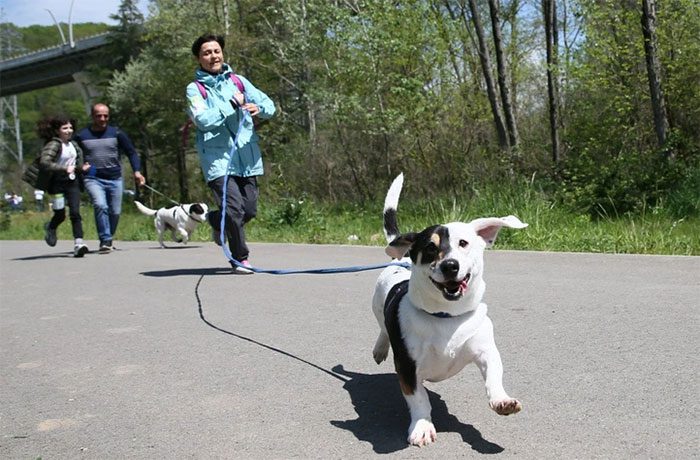The Habit of Tail Wagging: One of the “Mysteries” of Dogs
The question of why dogs wag their tails is still being explored by researchers. Leonetti, currently working at the University of Turin (Italy), has compiled and studied materials from various groups of scientists on this topic.
Leonetti believes that the most important function of a dog’s tail is communication. This is different from the tail of fish, which primarily serves for navigation; the tails of horses and cattle are used to chase away insects, while those of birds, cats, and monkeys help with balance.

Many studies have been conducted to explain the tail-wagging habit in dogs – (Photo: GETTY IMAGES).
So, what do dogs want to communicate? Animal cognition expert Emily Bray at the University of Arizona (USA) states that people often simply think that a dog wagging its tail signifies happiness or joy. However, the message is more complex and influenced by the angle and position of the dog’s tail while wagging.
For example, when the tail wags more to the right, it typically indicates that the dog is expressing interest in a stimulus or wants to approach something.
When it wags more to the left, the dog signals uncertainty or a desire to retreat. When wagging low and close to the ground, the dog expresses submission.
Research indicates that the level of tail wagging is under the conscious control of the dog. Moreover, Leonetti notes that dog breeds closely related to domestic dogs tend to wag their tails more frequently than those that are closely related to wolves.
Leonetti and his colleagues hypothesize that the habit of tail wagging in dogs has gradually developed since the early days of domesticating wolves into domestic dogs. The human brain reacts positively to rhythmic objects, and the tail-wagging behavior in dogs is often quite rhythmic.
Therefore, it is possible that dogs have developed the habit of wagging their tails, although it remains unclear whether this is done consciously or unconsciously.
According to Leonetti, deciphering the habit of tail wagging in dogs is still one of the most complex issues regarding a species that is incredibly close to humans. Research is moving towards a multidisciplinary approach, combining neuroscience, cognitive science, and physiology. This is not only a typical evolutionary process in animals but also involves human influence.
Leonetti believes that once a thorough understanding of the tail-wagging habit in dogs is achieved, research will also illuminate the mysteries of how humans have domesticated animals for thousands of years.


















































